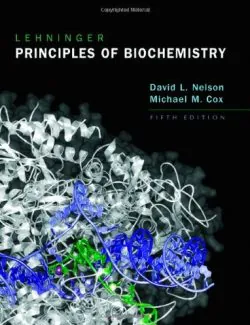Description
This book is written for an introductory course in biochemical engineering normally taught as a senior or graduate-level elective in chemical engineering. It is also intended to be used as a self-study book for practicing chemical engineers or for biological scientists who have a limited background in the bioprocessing aspects of new biotechnology. Several characteristics lacking in currently available books in the area, therefore, which I have intended to improve in this textbook are: (1) solved example problems, (2) use of the traditional chemical engineering approaches in nomenclature and mathematical analysis so that students who are taking other chemical engineering courses concurrently with this course will not be confused, (3) brief descriptions of the basics of microbiology and biochemistry as an introduction to the chapter where they are needed, and (4) inclusion of laboratory experiments to help engineers with basic microbiology or biochemistry experiments.
Following a brief introduction of biochemical engineering in general, the book is divided into three main sections. The first is enzyme-mediated bioprocessing, which is covered in three chapters. Enzyme kinetics is explained along with batch and continuous bioreactor design in Chapter 2. This is one of two major chapters that need to be studied carefully. Enzyme immobilization techniques and the effect of mass-transfer resistance are introduced in Chapter 3 to illustrate how a typical mass-transfer analysis, familiar to chemical engineering students, can be applied to enzyme reactions. Basic biochemistry of carbohydrates is reviewed and two examples of industrial enzyme processes involving starch and cellulose are introduced in Chapter 4. Instructors can add more current examples of industrial enzyme processes or ask students to do a course project on the topic.
The second section of the book deals with whole-cell mediated bioprocessing. Since most chemical engineering students do not have backgrounds in cell culture techniques, Chapter 5 introduces basic microbiology and cell culture techniques for both animal and plant cells. Animal and plant cells are included because of their growing importance for the production of pharmaceuticals. It is intended to cover only what is necessary to understand the terminology and procedures introduced in the following chapters. Readers are encouraged to study further on the topic by reading any college-level microbiology textbook as needs arise. Chapter 6 deals with cell kinetics and fermenter design.
This chapter is another one of the two major chapters that needs to be studied carefully. The kinetic analysis is primarily based on unstructured, distributed models. However, a more rigorous structured model is covered at the end of the chapter. In Chapter 7, genetic engineering is briefly explained by using the simplest terms possible and genetic stability problems are addressed as one of the most important engineering aspects of genetically modified cells. The final section deals with engineering aspects of bioprocessing. Sterilization techniques (one of the upstream processes) are presented in Chapter 8. It is treated as a separate chapter because of its importance in bioprocessing. The maintenance of complete sterility at the beginning and during the fermentation operation is vitally important for successful bioprocessing. Chapter 9 deals with agitation and aeration as one of the most important factors to consider in designing a fermenter. The last chapter is a brief review of downstream processing.













Leave us a comment
No Comments